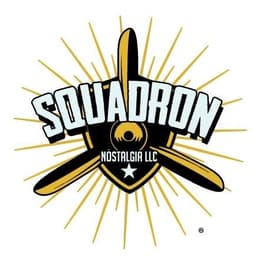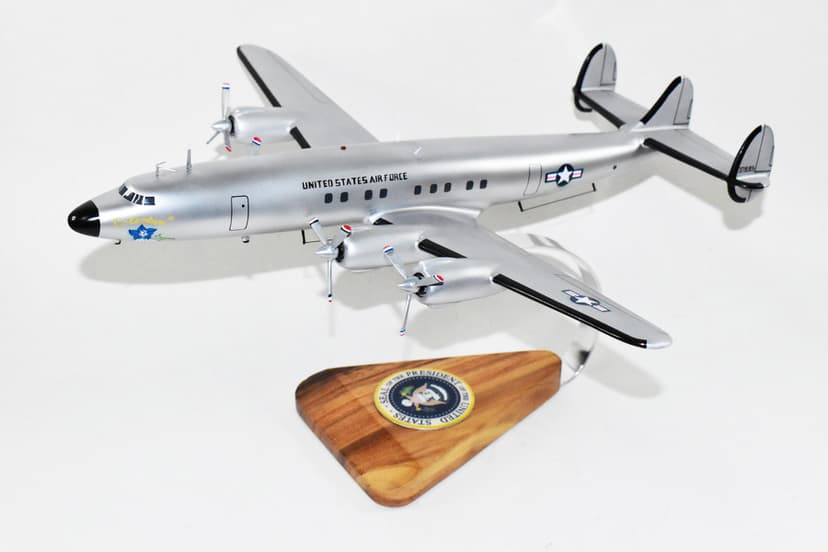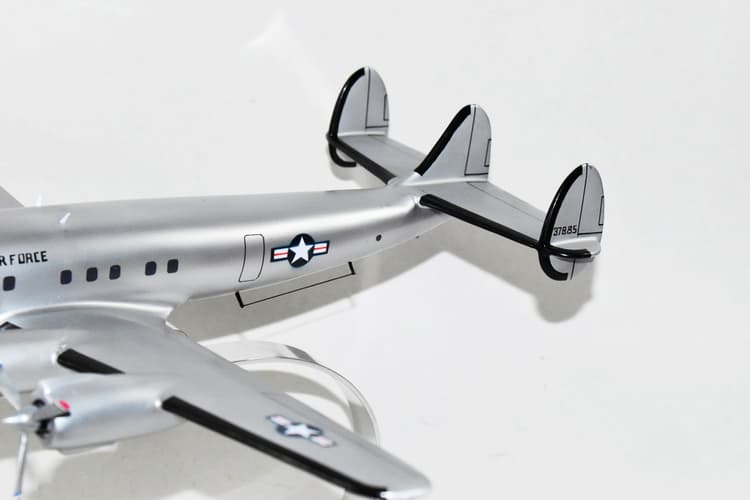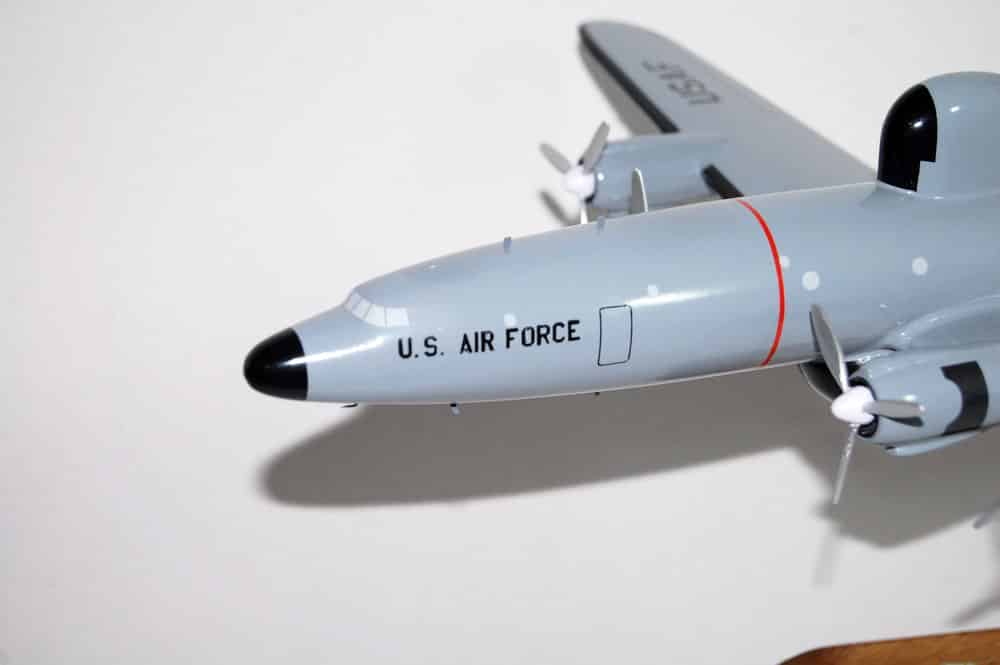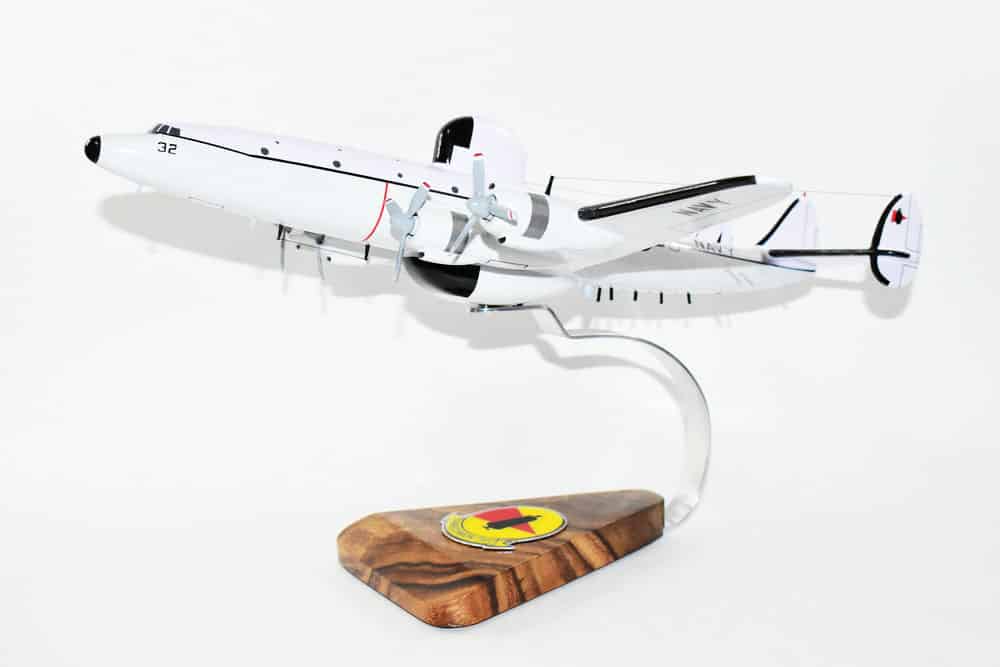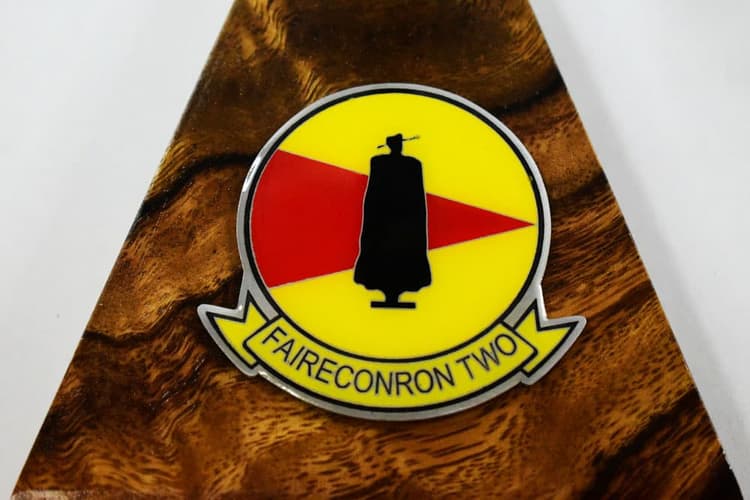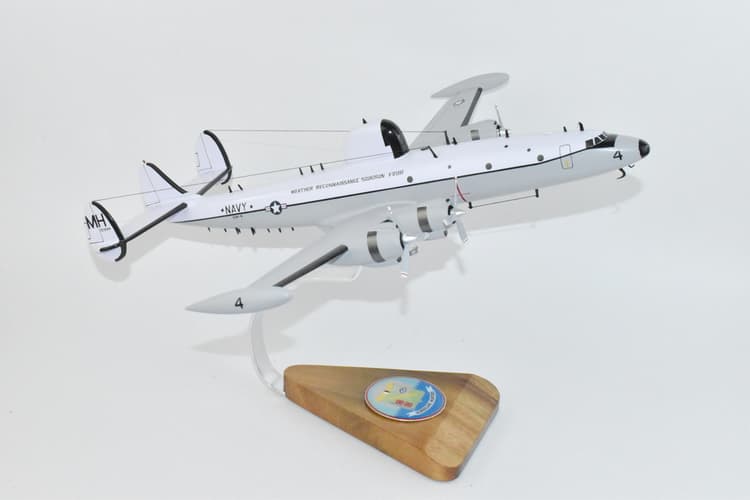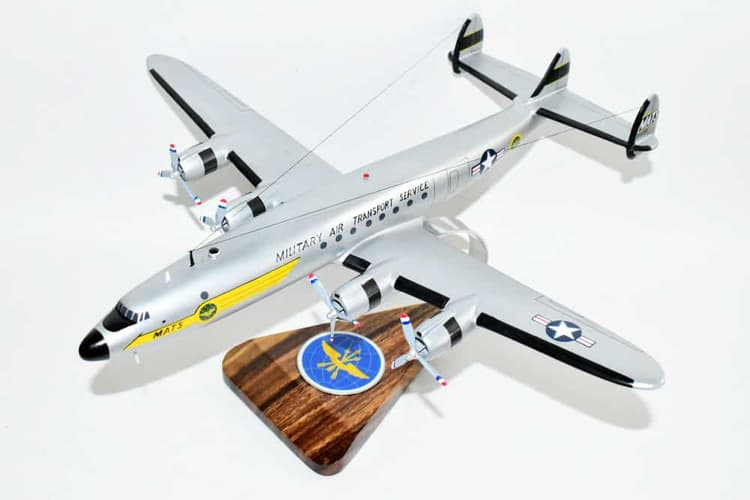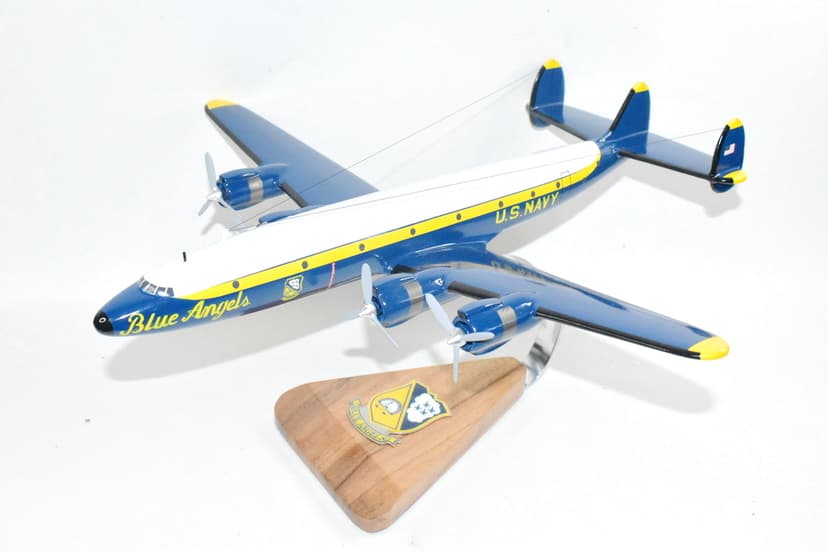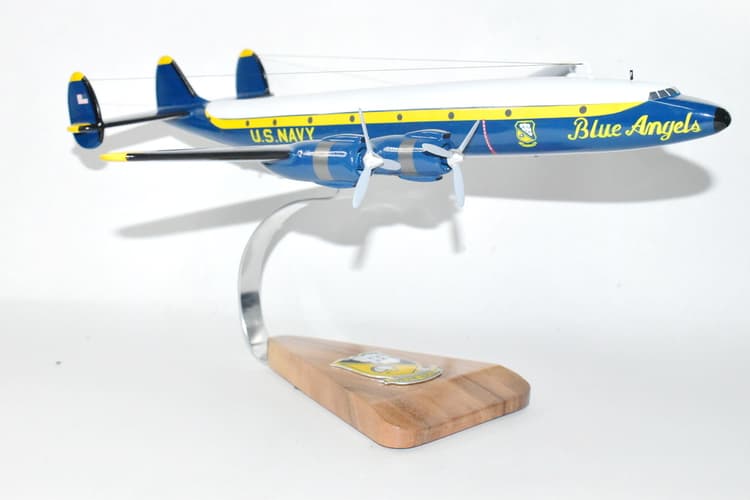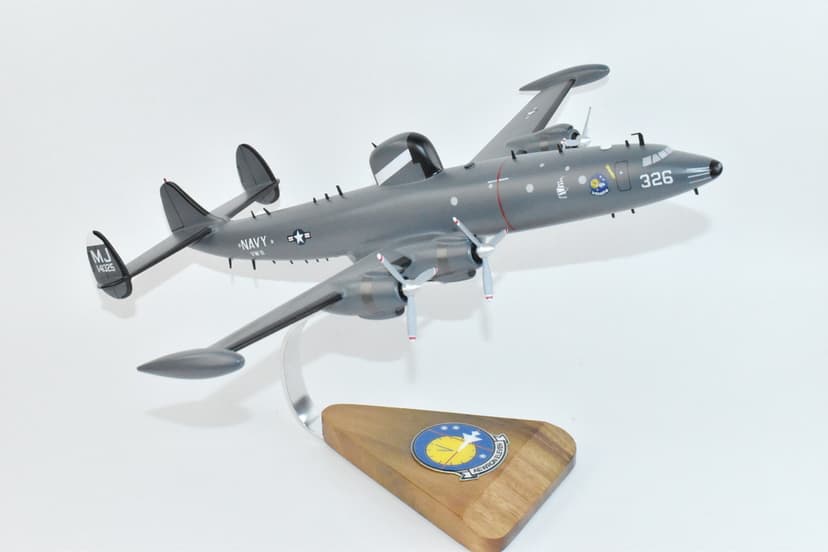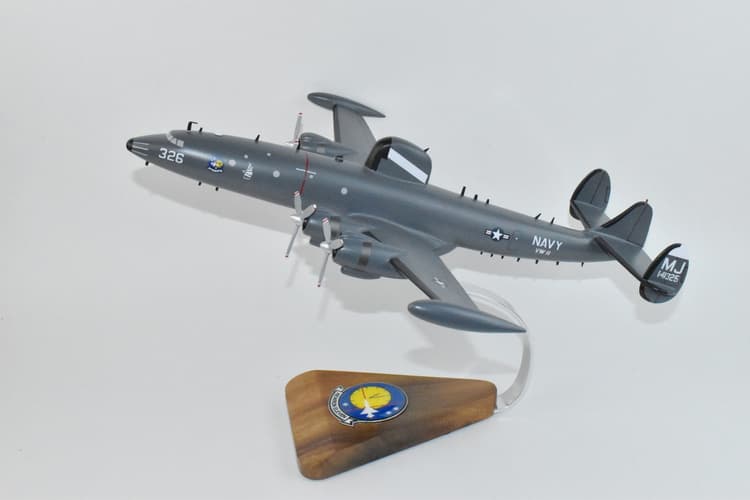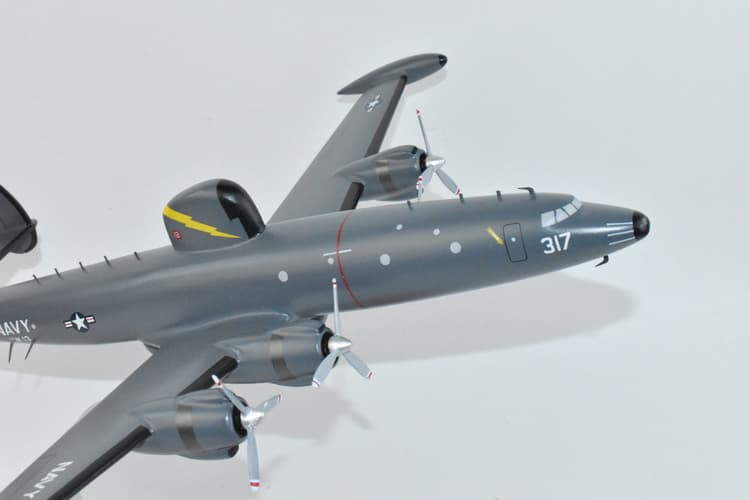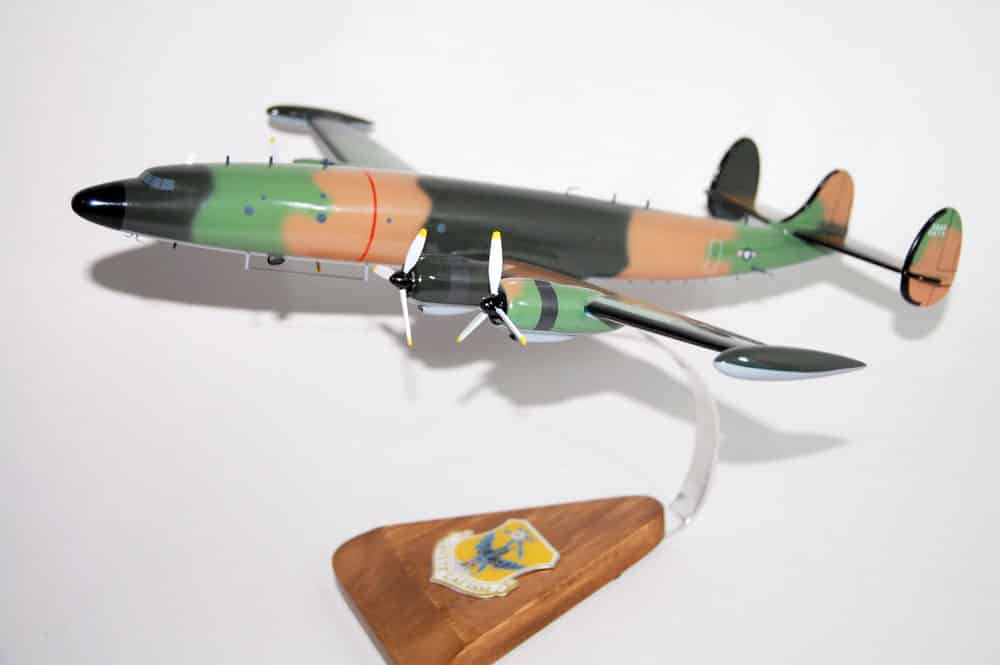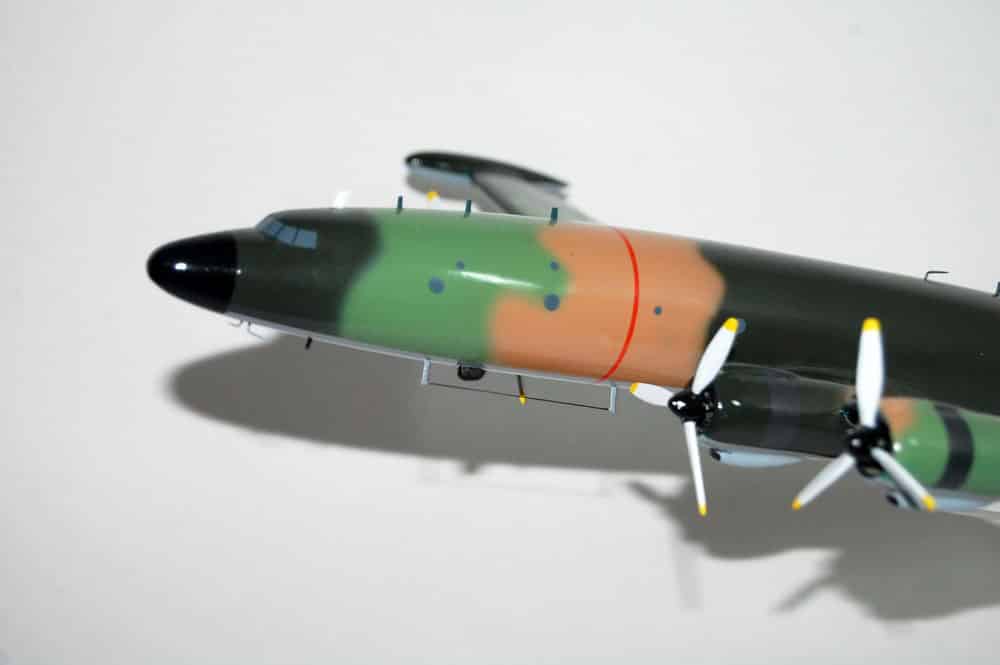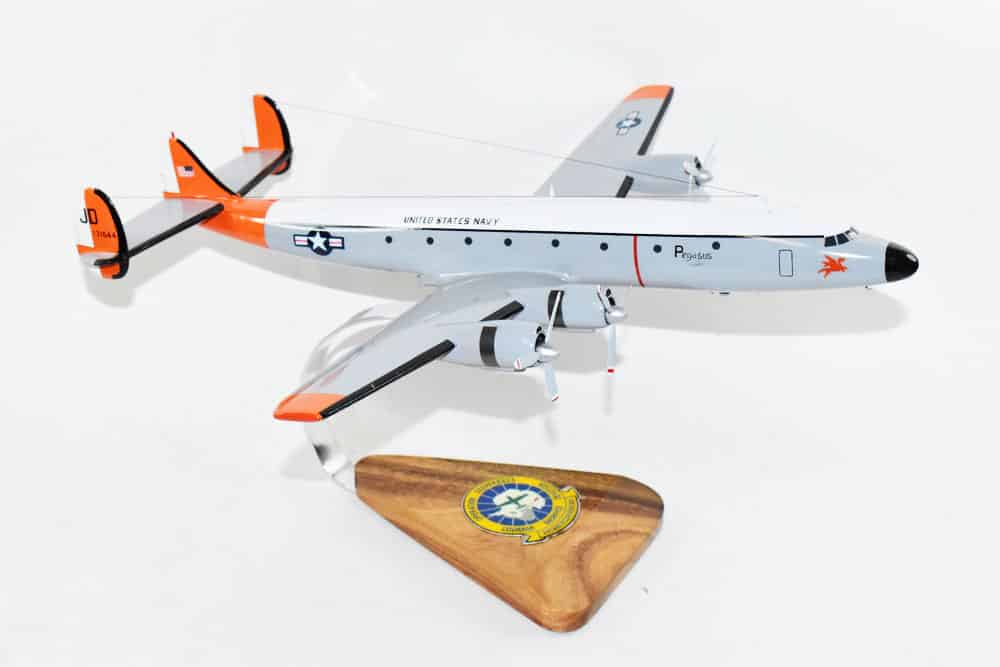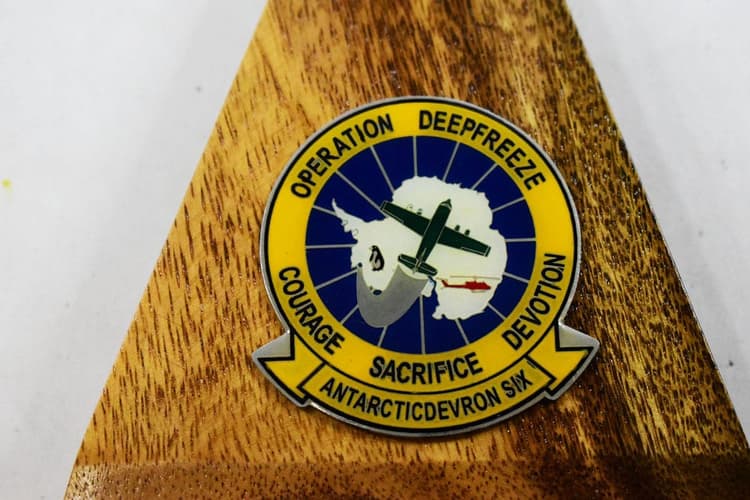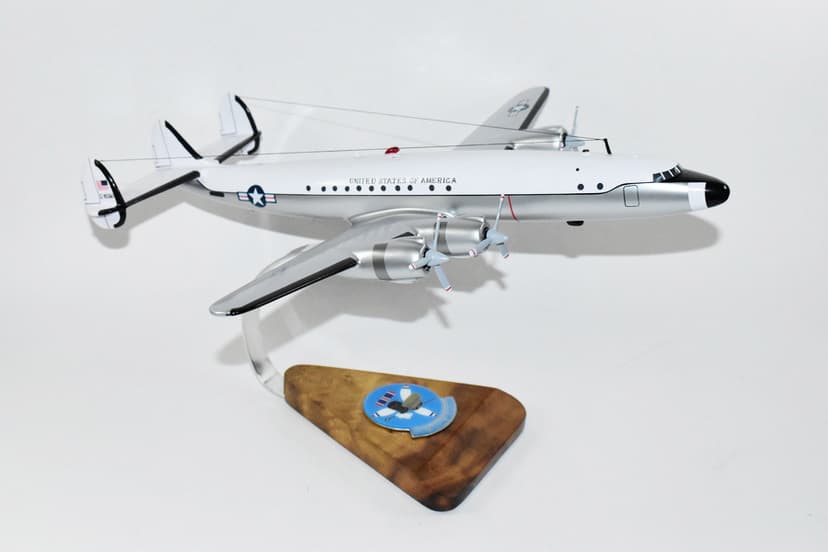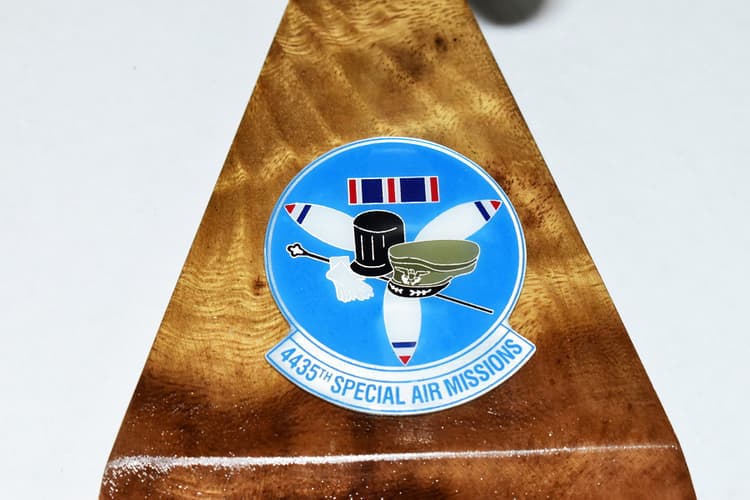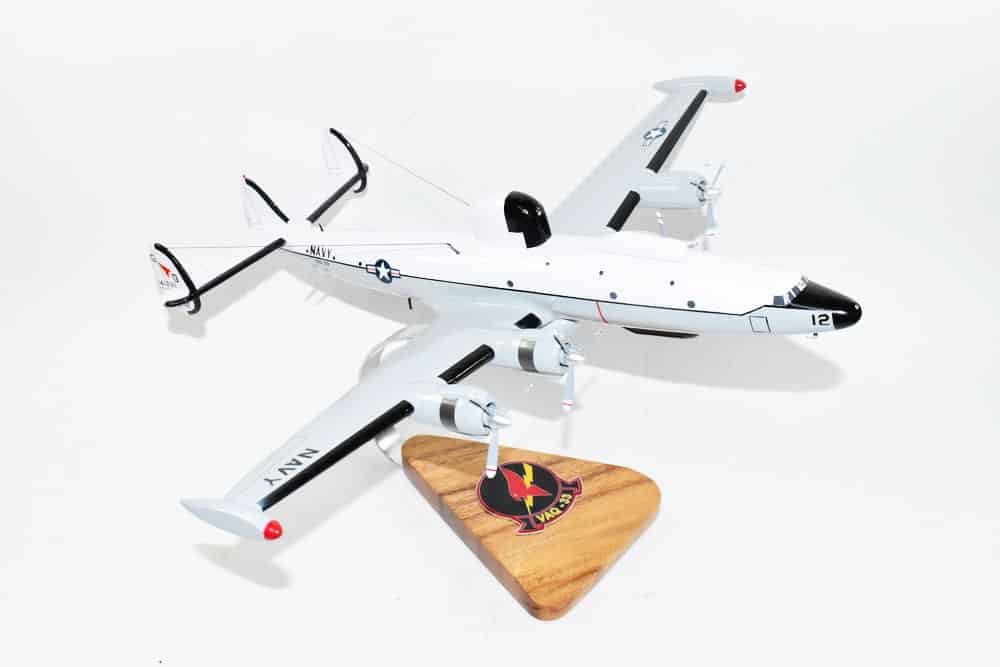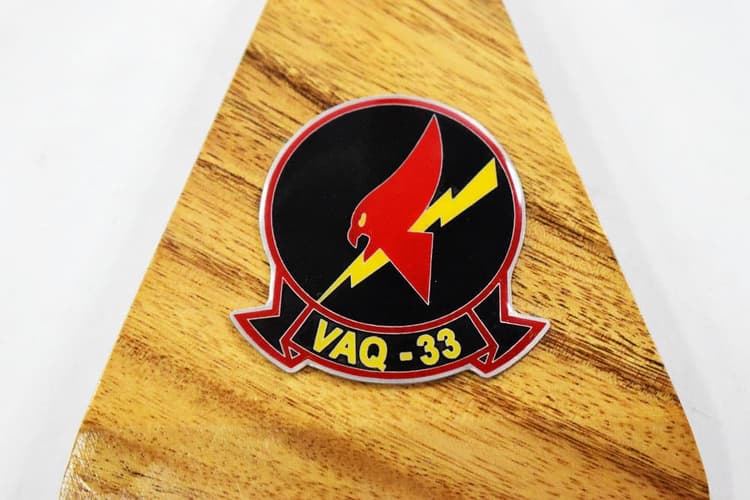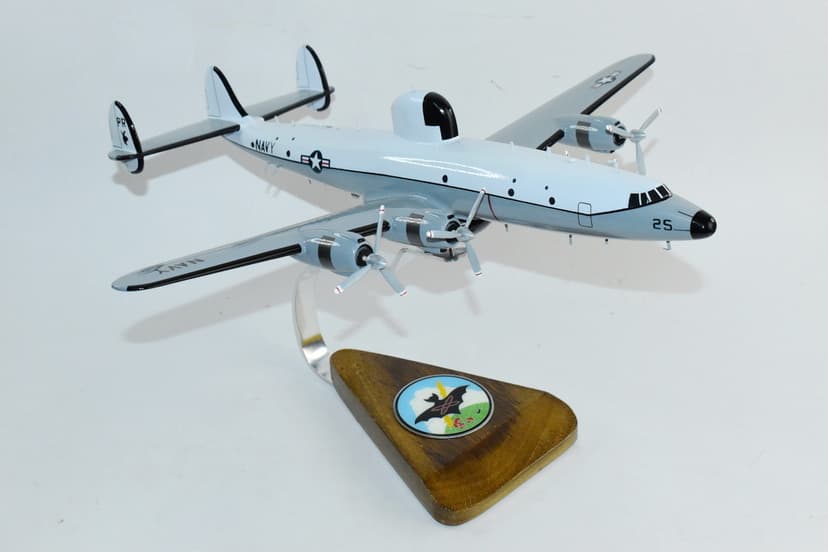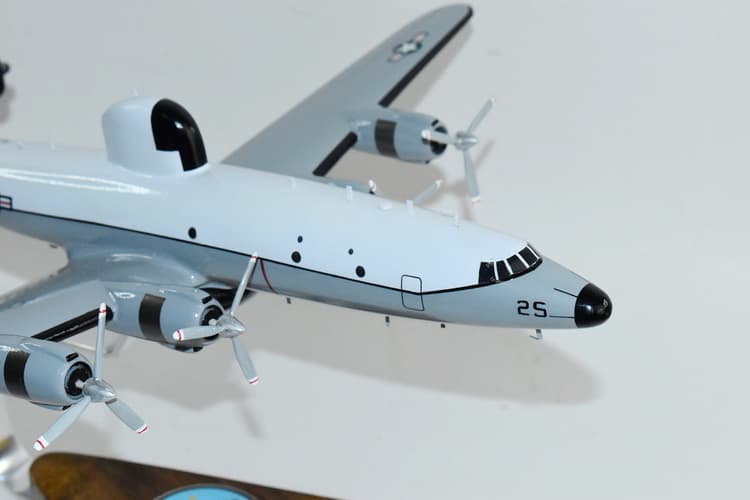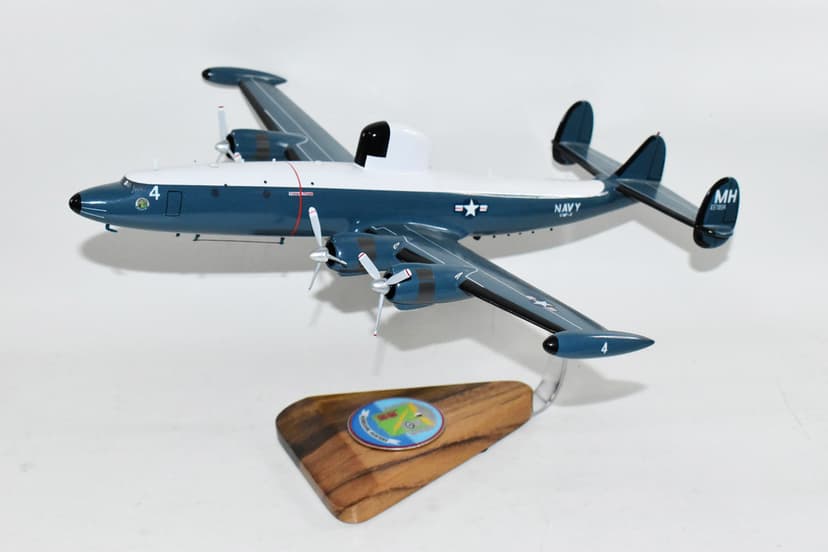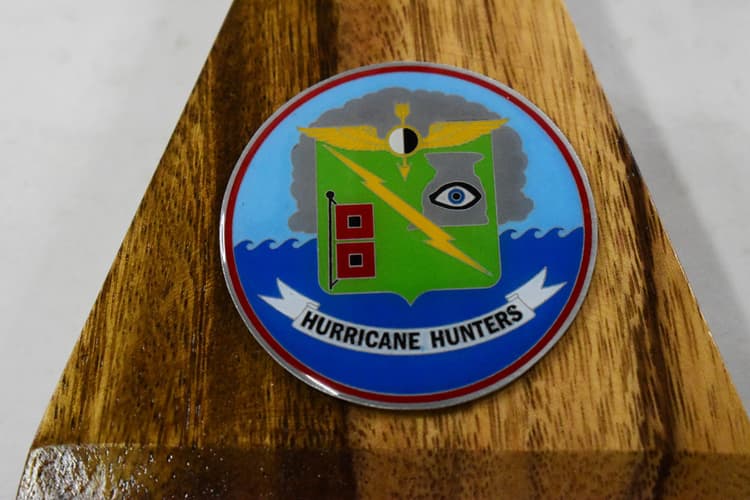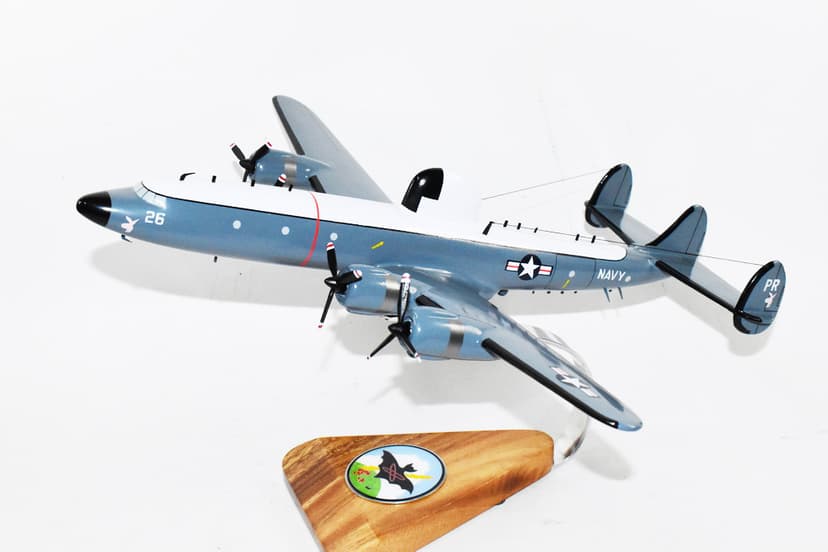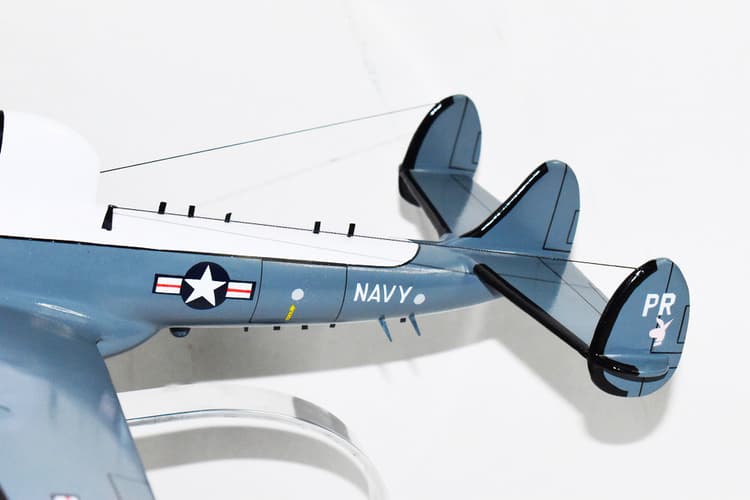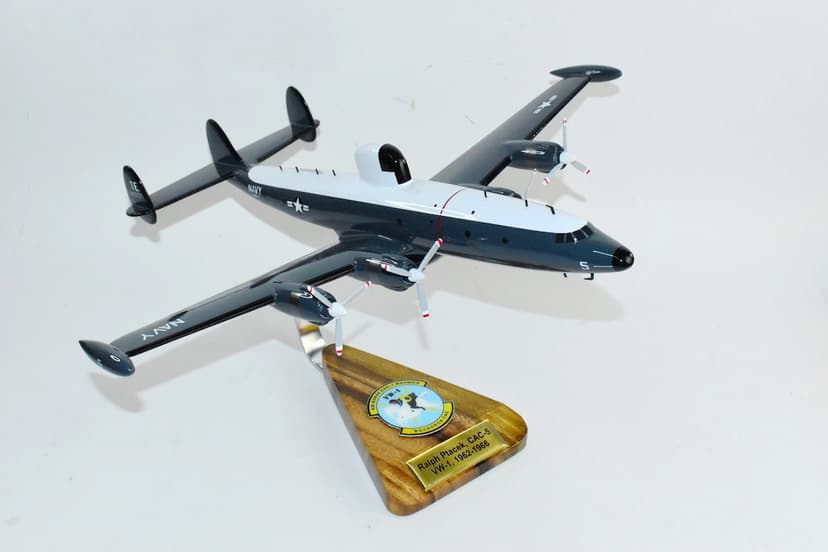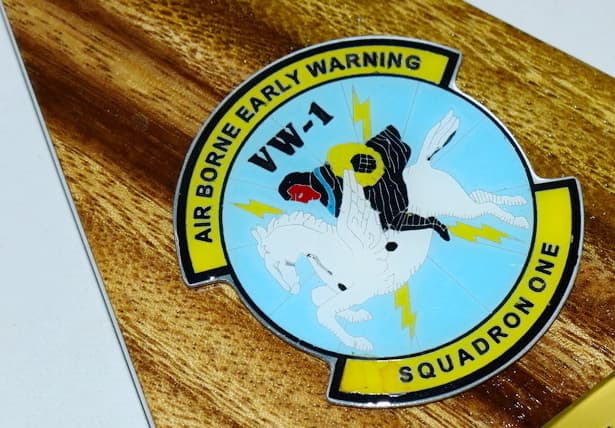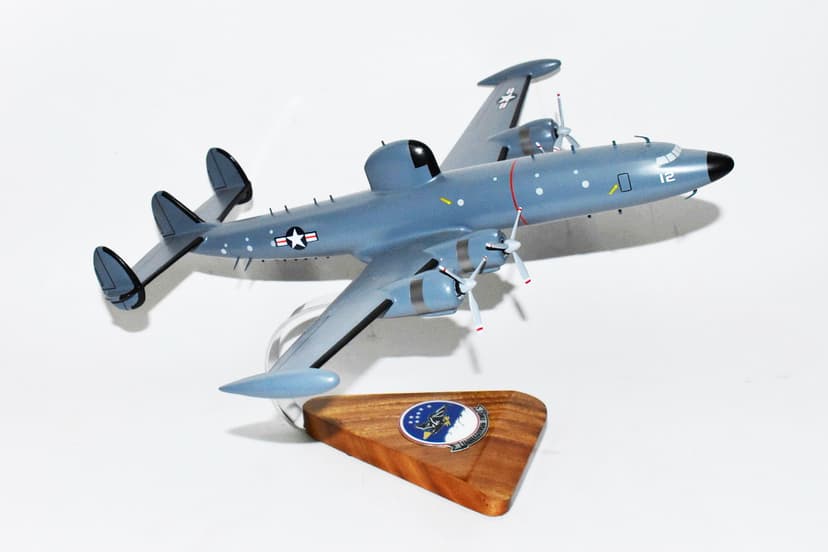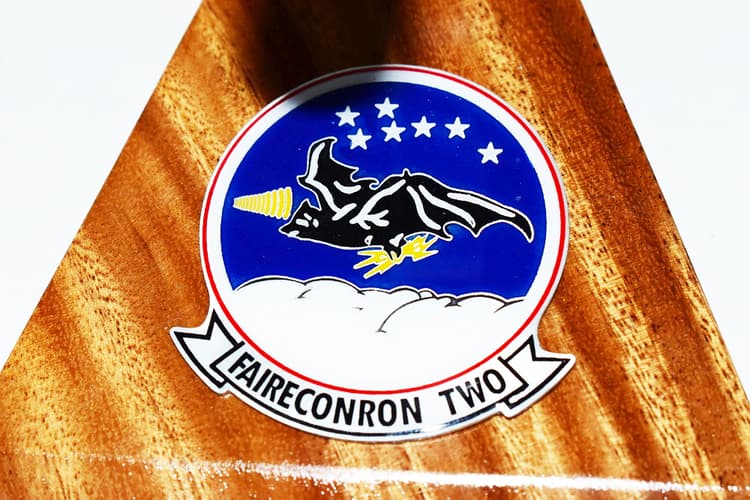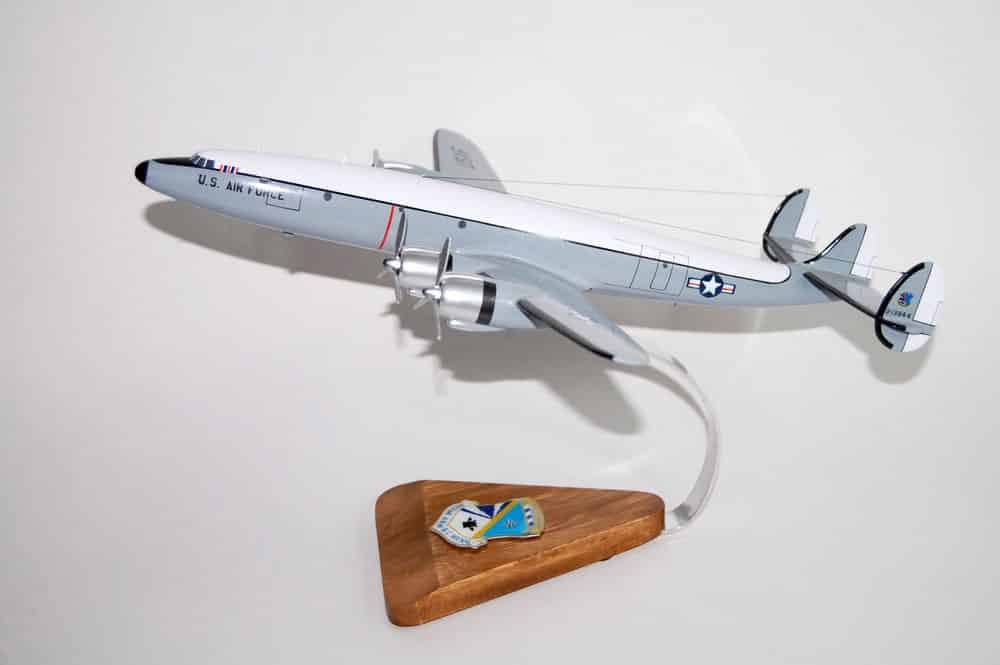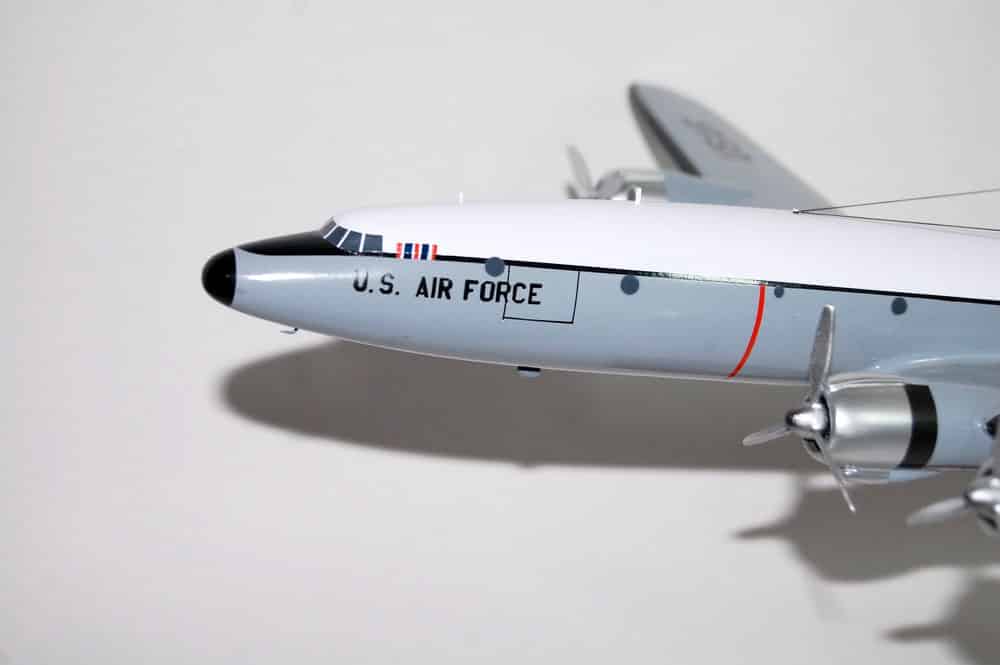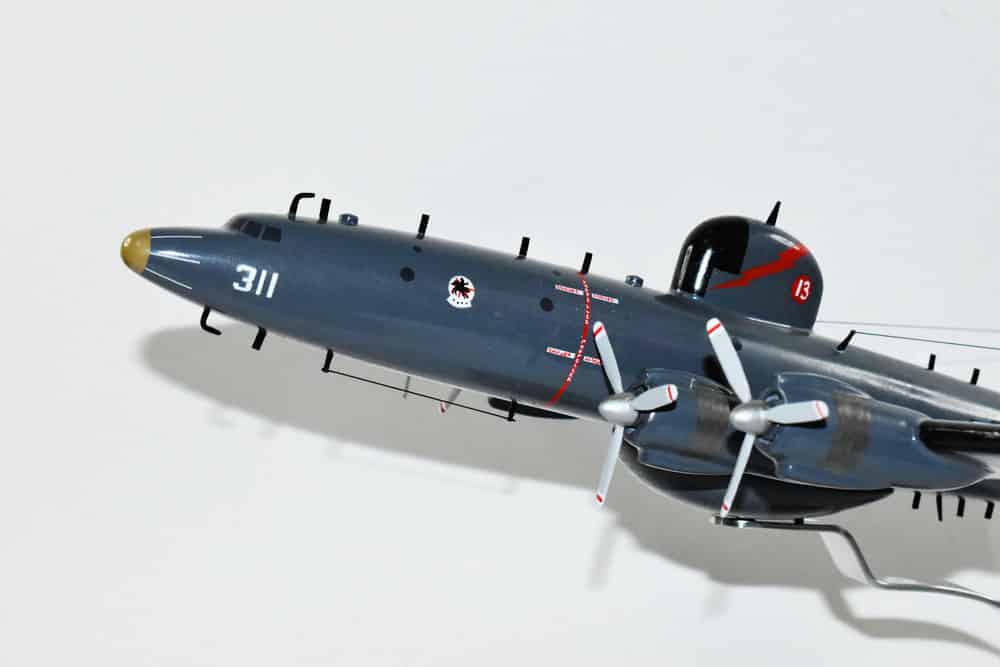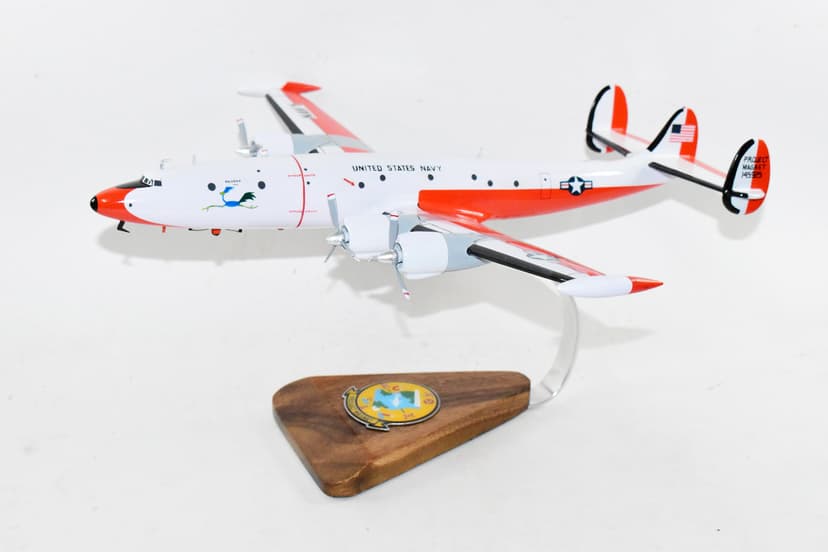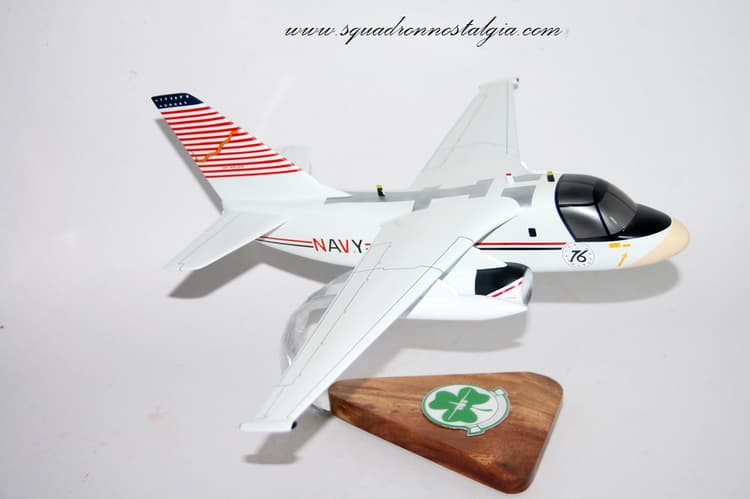Lockheed C-121 Constellation Model
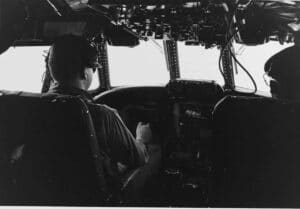
C-121 Constellation Model
The Lockheed C-121 Constellation is a military transport version of the popular Constellation airliner. A total of 332 aircraft were constructed for both the United States Air Force and United States Navy for various purposes, including numerous airborne early warning versions. The C-121 later saw service with smaller civilian operators until 1993. The aircraft was developed after Lockheed's first attempt at a military version of the Constellation, the C-69, was unsuccessful due to issues with the Wright R-3350 engines. In 1947, Lockheed released a more economical version, the L-749, which featured extra fuel capacity and a more efficient version of the R-3350. The United States Air Force (USAF) then ordered ten L-749A aircraft, designated the C-121A, while the United States Navy (USN) ordered two AWACS versions of the L-749A, designated the PO-1W (later WV-1). The C-121A was primarily used for cargo transport, but was often fitted with 44-seat passenger transport interiors. The USN's R7V-1, a passenger/cargo convertible version of the L-1049B Super Constellation, was also widely used for various missions, including transporting personnel and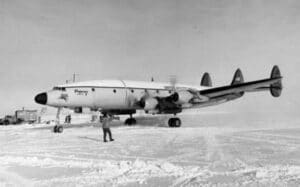 cargo, medical evacuation, and supporting Antarctic supply missions. The USAF's C-121C, based on the L-1049F Super Constellation, was also used for a variety of purposes, including carrying passengers, fully equipped troops, or stretchers. The C-121G, a modified version of the R7V-1, and the C-121J, an R7V-1 redesignated by the USN, were also used by the Air Force. The C-121L was a modified C-121C used for electronic intelligence gathering missions, while the WC-121N was a weather reconnaissance aircraft. The C-121S was a modified C-121C used for special operations, and the VC-121E was a VIP transport version of the C-121C. The C-121 saw service in various conflicts, including the Vietnam War, and was eventually retired in the 1990s.
cargo, medical evacuation, and supporting Antarctic supply missions. The USAF's C-121C, based on the L-1049F Super Constellation, was also used for a variety of purposes, including carrying passengers, fully equipped troops, or stretchers. The C-121G, a modified version of the R7V-1, and the C-121J, an R7V-1 redesignated by the USN, were also used by the Air Force. The C-121L was a modified C-121C used for electronic intelligence gathering missions, while the WC-121N was a weather reconnaissance aircraft. The C-121S was a modified C-121C used for special operations, and the VC-121E was a VIP transport version of the C-121C. The C-121 saw service in various conflicts, including the Vietnam War, and was eventually retired in the 1990s.
